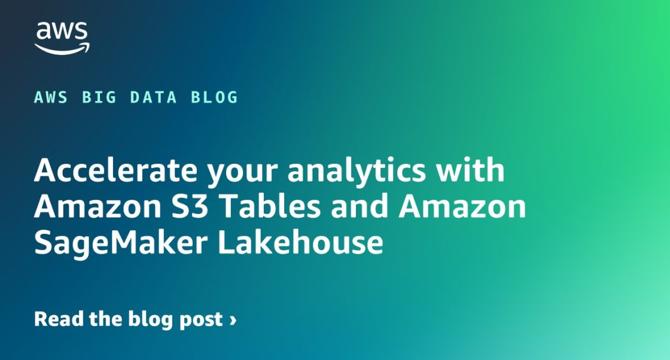Amazon
1M
136

Image Credit: Amazon
Accelerate your analytics with Amazon S3 Tables and Amazon SageMaker Lakehouse
- Amazon SageMaker Lakehouse integrates with Amazon S3 Tables, offering unified access to S3 Tables, Redshift data warehouses, and other data sources for analytics and querying.
- Organizations are increasingly data-driven and require faster access to vast data across various sources for analytics and AI/ML use cases.
- A retail company example demonstrates the need for managing diverse data sources and volumes, leading to the adoption of a data lake using Apache Iceberg.
- SageMaker Lakehouse provides centralized data management across different data sources and analytics services, simplifying access and permissions.
- The article guides users through setting up analytics services with SageMaker Lakehouse, enabling data unification and collaboration for insights.
- High-level steps include creating table buckets, publishing Redshift data to the Data Catalog, and setting up SageMaker Unified Studio for projects.
- The solution architecture focuses on Example Retail Corp, illustrating how data from customer touchpoints can be consolidated and analyzed for business insights.
- Users like data analysts, BI analysts, and data engineers benefit from integrated access to data lakes and warehouses for analytics, reporting, and modeling tasks.
- The process involves creating S3 Tables, onboarding Redshift tables, setting up SageMaker projects, granting access permissions, and verifying data access in SageMaker Unified Studio.
- By unifying data access and tools, SageMaker Lakehouse enables efficient data analysis, querying, and modeling across multiple data sources with fine-grained control.
Read Full Article
8 Likes
For uninterrupted reading, download the app